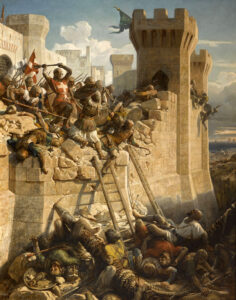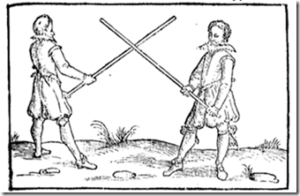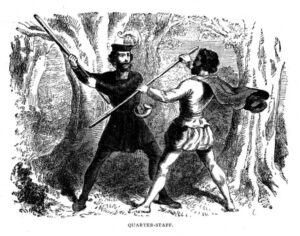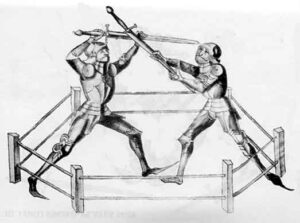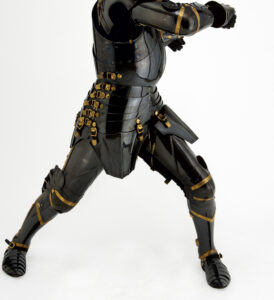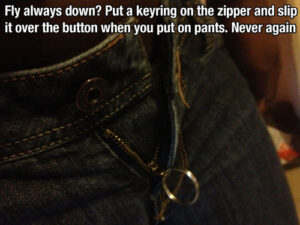Given the subject matter of the last few blog posts it seems logical that today I feature a polearm with poliorcetic connection.
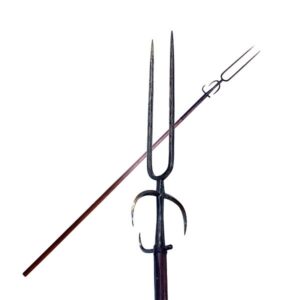
The military fork is obviously a weapon derived from the agricultural pitchfork. What is interesting is that one reference book I have mentions that it is a particularly useful weapon to have around during a siege. The fork can be used to hold up ladders, or conversely, push them away from walls. It can also be used to raise supplies up to the battlements. The backward facing hooks might have seen application in fighting fires, pulling ignited thatch down from roofs. Given this is essentially a pitchfork, the tines themselves might be used to relocate burning thatch.
As a weapon, the fork part could be used to catch weapons or limbs, perhaps pushing the victim’s guard to one side for the vital seconds needed for a comrade to make an attack. The backward facing hooks could be used to pull an enemy off balance or from his horse. Like many multi-tined weapons, penetration depth would be limited, preventing the weapon burying itself too deep in a target so that it became difficult to withdraw.
A not widely known fact is that the tines of a gladiator’s trident were so spaced that they prevented the likelihood of a point entering the eyehole of another gladiator’s helmet. Blinded gladiators were a poor investment, so trident-armed retarius were therefore always paired with opponents with closed helmets. The military fork seems to have the opposite design strategy. Those two very slender but deadly points would doubtless sometimes menace the eyeholes of an enemy’s visor.



